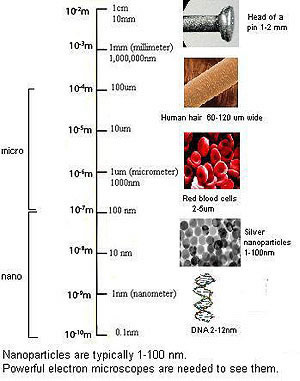26
Mar
Toxic Textiles Infused with Antimicrobial Nanosilver Poised for EPA Pesticide Registration
 (Beyond Pesticides, March 26, 2020) An Environmental Protection Agency (EPA) determination could allow toxic antimicrobial nanosilver to be registered for use in textiles, including clothing, according to Bloomberg Environment. Nanotechnology products harm human, environmental, and animal health. Despite this, EPA’s preliminary conclusion approves the registration of nanosilver-containing Polyguard as a textile “protectant.”
(Beyond Pesticides, March 26, 2020) An Environmental Protection Agency (EPA) determination could allow toxic antimicrobial nanosilver to be registered for use in textiles, including clothing, according to Bloomberg Environment. Nanotechnology products harm human, environmental, and animal health. Despite this, EPA’s preliminary conclusion approves the registration of nanosilver-containing Polyguard as a textile “protectant.”
Public challenges have blocked nanosilver registration in the past when courts found EPA lacks the authority to register these toxic particles. “They’ve failed to collect data about potential exposure routes for nanosilver products, including textiles, which toddlers or pets could chew or put in their mouths,” says Jaydee Hanson, policy director at the Center for Food Safety. “Another challenge is how do you accurately test the actual product and what data do you have which suggests that other kinds of nanosilver work the same way?”
Nanosilver, or silver nanoparticles, are microscopic particles that are used as antimicrobials, which kill bacteria and fungi. They range in size from 1-100 nanometers (nm) across or 0.1% the diameter of a human hair. Some research attributes nanosilver toxicity impacts to its small size, which allows it to be absorbed through the skin and enter the bloodstream and lymphatic system to disrupt normal organ function. The use of nanosilver for commercial consumption increases exposure to humans through ingestion, absorption, and inhalation.
A 2017 lawsuit by the Natural Resources Defense Council and the Center for Food Safety successfully disputed EPA on the conditional registration of the nanosilver-based NSPW-L30SS. The U.S. Court of Appeals for the Ninth Circuit ruled against EPA since there was no evidence of “public interest.” Advocates argue that consumer goods infused with nanosilver have no place in the consumer market and EPA should deny registration of nanosilver-based Polyguard as a pesticide.
Nanosilver has antimicrobial properties that control the growth of odorous bacteria, mold, fungus, algae, and mildew on consumer products. Various consumer goods incorporate silver nanoparticles, such as clothing, kitchenware, toys, and cosmetics. Though EPA now restricts nanosilver use to fewer products, the agency plans to approve Polyguard (a product containing nanosilver) for use in finished textiles.
In nanoscale form, silver tends to have higher toxicity than other metals. Many of the nanosilver products for commercial use disperse into the environment via drains. Washing nanosilver products, like textiles, deposit nanoparticles into the water waste and surface waters. So, while nanosilver has natural antibiotic properties, nanosilver exposure creates a myriad of health risks in humans, animals, and the environment.
To learn more concerning nanosilver toxicity to human, animal health, and the environment, visit Beyond Pesticides’ antibacterial webpage. Precautions against nanoparticle toxicity involve knowledge of what products to buy to reduce the risk of exposure. The Center for Food Safety hosts a comprehensive list of nanosilver products to avoid. The Project on Emerging Nanotechnologies hosts an expansive, dynamic list of all nanosilver-based materials in consumer products. For more information about nanoparticle regulation, visit the nanosilver regulatory issues page.
All unattributed positions and opinions in this piece are those of Beyond Pesticides.
Sources: Bloomberg Environment, IOPScience, Frontiers, Springer










